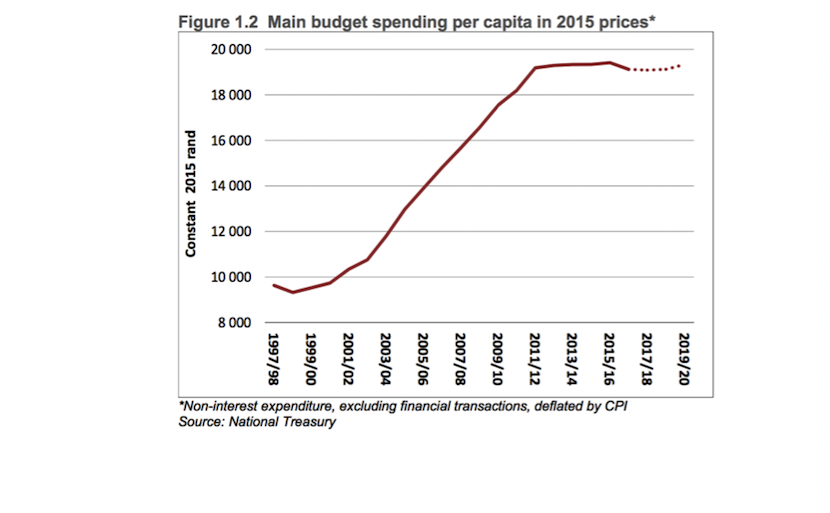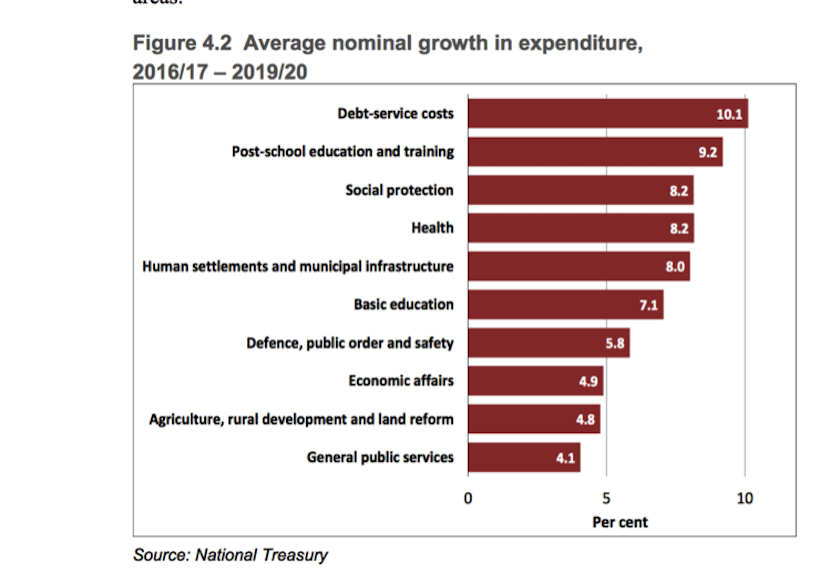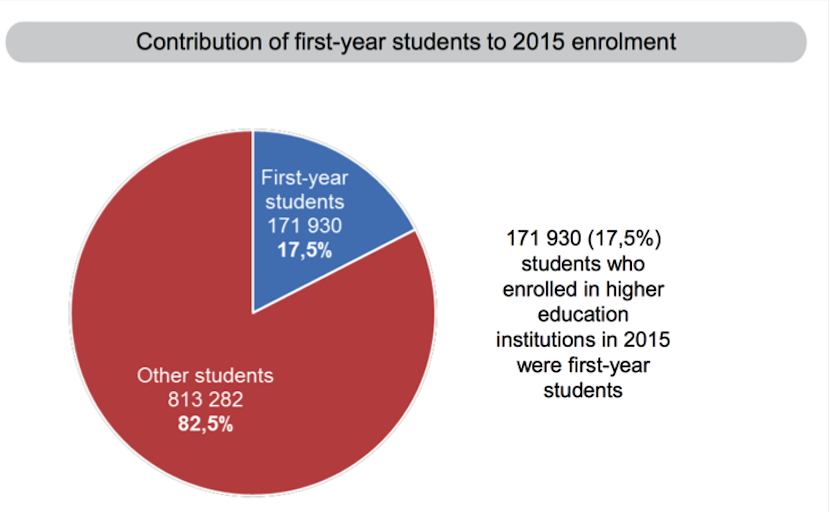By Matthew Lester*

At first glance it appears that there is little comfort for the #FeesMustFall cohort in the medium term budget policy statement ‘MTBPS’. And I fear that the protesting students’ reaction will be ‘too little too late.’
On closer inspection one has to admire what the protesting students have achieved in just over a year.
National Treasury has tried to paint some rosy pictures with regard to the funding of Higher Education. But one has to watch the logic unfold quite closely from the graphics contained in the MTBPS review.
Step 1
The sluggish growth rate in SA remains with not much better prospects on the horizon.
Step 2
Don’t forget that there is very little space for SA to borrow if there is to be any prospect of avoiding the threatened rating agencies downgrade to Junk Status on 2 December 2016.
So real per Capita spending for ALL SOUTH AFRICANS is not increasing.
Step 3
Hammer the taxpayer! Government proposes a ‘balanced consolidation.’ Proposals include a combination of tax policy measures that will raise an additional R43 billion over the next two years, and a reduction in the expenditure ceiling of R26 billion. Taxpayers are going to understand the full meaning of the word ‘pain’ in the tax proposals of the February 2016/17 National Budget Speech.
But taxpayers can count themselves lucky that the downward estimate of tax collections for 2016/17 is only R15 billion. Just two months ago it all looked a lot worse.
But that’s just to keep SA going and will not make much difference in the scheme of the #FeesMustFall crisis.
Step 4
So create an expenditure budget increasing by 7,6%p.a. over the MTBF period.
But higher education will increase at 9,2% overall.
And then that looks superb in relation to the rest.
Step 5
Now convince everyone that the allocations to higher education have increased from
from 1 per cent of GDP in 2008 to 1.5 per cent today. But most of this increase benefited vocational colleges, sector education and training authorities and the National Skills Fund, rather than universities.
The 2016 MTBPS proposes to accelerate the growth of spending on post-school education. Despite fiscal constraints, subsidies to universities grow at 10.9 per cent each year and transfers to NSFAS grow at 18.5 per cent.
So Higher Education expenditure is growing faster than any other except interest on national debt.
In the 2016 Budget, R5.6 billion was added to university subsidies to fund the zero per cent fee increase for the 2016 academic year.
NSFAS received additional funding of R10.6 billion over the 2016 MTBF period. Of this amount, R2.5 billion was allocated in the current year for short-term debt relief for 71 753 unfunded or inadequately funded students who were at universities in the 2013, 2014 and 2015 academic years. The remaining R8 billion was for unfunded new and continuing students for the 2016 academic year and beyond.
In the 2017 MTEF, government will fund the increase in fees at higher learning institutions for the 2017 academic year, up to a maximum of 8 per cent, for students from households earning up to R600 000 per year. Significant top-ups are also made to NSFAS.
Conclusion
Chapter 1 of the MTBF review ends with the words ‘With decisive action, South Africa will emerge from a period of economic weakness. This will enable government to provide greater support to the economy and boost employment.’
Fine words.
But MTBPS 2016/17 is not going to make any difference on the university campus tomorrow.
If the solution is to increase the NSFAS budget by 16% per annum it will take years to solve the problem. The only way we are going to find a solution is to redesign the entire higher education funding model.
How can we do that? For me, the start of the solution lies in the Higher Education statistics released by STATSSA on 25 October 2016.
The gut reaction is to think that universities are just crammed with first-years. But in 2015 the first-year cohort was just 17,5% of the total enrolment.
So now if we redeploy the NSFAS allocation of R14 billion that may well be enough to get the first-year cohort into university free. Then:
- Those who don’t make it through first year can walk away with no debt.
- Those who past into second year can be guaranteed loan funding through a private sector student loan scheme that is subsidised through an increase in the skills development levy.
We will have to wait and see if NSFAS can get it’s act together. Maybe, maybe not!
- Rhodes University Professor Matthew Lester was educated at St Johns College, Wits and Rhodes universities. He is a chartered accountant who has worked at Deloitte, SARS and BDO. A member of the Davis Tax Committee investigating the structure of aspects of the RSA tax system, he is based in Grahamstown. Follow him @ProfMattLester.







